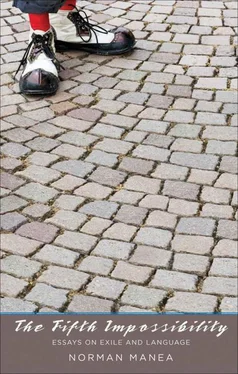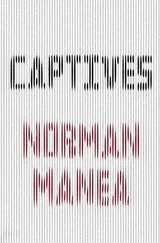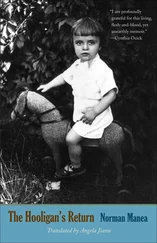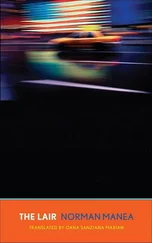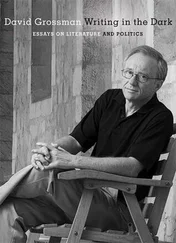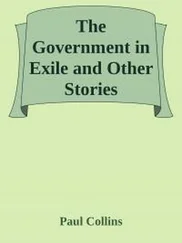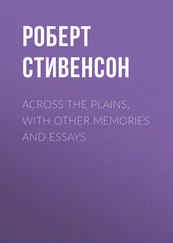How could the world of believers forget this apocalyptic violation of the most important of the Ten Commandments? Are fifty years too long a time to remember this “shame,” which in the end is far more than merely shameful? Is the “moral cudgel” of the Holocaust nothing more than an excessive invention of the media’s postmodern trivial machinery? And is the truth really so difficult to distinguish from its commodification?
I wonder whether we are allowed to lose sight of this distinction, even when the banalization, ritualization, and trivialization of truth proves too much for many of us. And even when appropriate solutions are just as difficult as the debate itself. The aftermath of the truth is, after all, nothing compared to the horrible truth itself — a fact which, I hope, is news to no one.
I hope that Martin Walser and his readers agree with me that we cannot give up our memories of the past — or their burden, or their meaning — no matter how unbearable the vulgar simplifications, no matter how regrettable the inevitable distortions to which they are subject, may be.
Translated by Susan Bernofsky, 1999
(Preliminary Ascent into Posterity: Celan — Fondane)
One evening when the sun and not only the sun had set, there went out of his little hut the Yid, and off he went — a Yid and the son of a Yid — and with him went his name, his unutterable name, it went, traipsing along, suffered itself to be heard, leaning on a staff he came over boulder and stone, hearest thou me, thou dost, it’s me, me, me and him, the one thou hearest or appearest to hear, me and the other, off he went therefore, as one could well hear, when certain things had set, as is their wont, off he went under the canopy of cloud, walked in the shadow, his and the stranger’s — for the Yid, as one knows, what does he possess that can be truly called his own, that is not borrowed, lent and not returned — but to resume, on he went along this road, beautiful beyond compare, walk like Lenz he did, through the mountains, he who had been ordained to live down in the plains, the lowlands where he belonged, he, the Yid, walked on and on.
On he walked, indeed, along this road, this beautiful road.
And who do you think should be coming from the opposite direction? None other than his first cousin came to meet him, his own kith and kin, a quarter of a Yid’s life older than himself, he came walking large as life, along the very same road, striding in the shadow, borrowed, of course — for, I ask you again and again, how could he have come with a shadow of his own when God had made him a Yid, large as life he came, he came to meet the other, Gross neared Klein and Klein, the Yid, bade his staff be quiet before the staff of the other Yid, Gross.
quiet, too, was the stone. And, quiet, too was the mountain wherein they walked, the one and the other. 1
Paul Celan’s only prose text, Gespräch im Gebirg ( Conversation in the Mountains ), 2from which I have cited the opening, seems to have been written after an aborted meeting with Theodor Adorno, in the summer of 1958. Celan, his wife Gisèle and their son Eric, aged four, had come to Sils-Maria in the Swiss Alps for a vacation during which the meeting between poet and philosopher was to take place. Celan returned to Paris early, however, thus missing the confrontation — as he would say, “not by chance.” He had been mistaken in believing that “Professor Adorno” was Jewish. In reality, Theodor Wiesengrund had adopted the religion and name of his Catholic mother. The dialogue on the mountain between the famous Jew (Gross) and the timid, insignificant Jew (Klein), conceived by Celan after his departure from Sils-Maria would be, according to some, the result of the meeting that did not take place.
The staff of “the little” mountain climber Klein keeps still as he commands it in the face of the “great” interlocutor, Gross, not necessarily out of respect, as might be supposed, but probably (as Jean Pierre Lefebvre writes in his remarkable study “Parler dans la zone de combat — Sur le Dialogue dans la montagne”), 3out of insolence. Not really so inexplicable … Adorno had renounced his father’s name in favor of his mother’s name and religion, but he had also maintained some not so very admirable relations with the Nazis in the 1930s, as Golo Mann has shown, and he was one of those Niebelungen de gauche who dodged the task of protecting the poet in the horrible “Goll affair” when Celan stood accused of plagiarism.
In 1959, Adorno would pronounce his famous sentence: “To write poetry after Auschwitz is barbaric,” which the poet took as a personal accusation although at the time Adorno had no knowledge of Celan’s celebrated Todesfuge. Paradoxically — and not completely so — after Death Fugue was published in Bucharest in 1947 (at which time it was entitled Death Tango ), Paul Celan’s entire body of poetic work would become the most expressive and revelatory proof that poetry may be written after Auschwitz, but not in the same way as before . The philosopher Adorno would nuance his previous position, meanwhile, as he became Celan’s admirer and exegete. Adorno would reproach the poet, in fact, for having left Sils-Maria early in the summer of 1958, for, by leaving, Celan had missed his chance to meet a truly great Jew, the learned Gershom Scholem (the researcher into Jewish mysticism) whom Celan read and admired, by whom he was beginning to be influenced and who was also present at the Alpine resort.
In his ample monograph, Paul Celan: Poet, Survivor, Jew , 4John Felstiner contends that Celan’s way of writing Conversation in the Mountains creates an original and spiritual cross between the filmic and written visions of Ingmar Bergman and Samuel Beckett.
Felstiner goes on to suggest other possible sources of inspiration for Celan’s Conversation . These include:
1. Büchner’s novella Lenz , in which the hero loses his mind and wanders through the mountains crying: “I am the wandering Jew!”
2. Thus Spake Zarathustra —itself conceived by Nietzsche at Sils-Maria (Celan would note on a copy of Conversation : “In memory of Sils-Maria and Friedrich Nietzsche who — as you know — wanted to shoot all the anti-Semites),
3. Kafka’s Excursion in the Mountains (which Celan translated into Romanian), as well as
4. Martin Buber’s 1913 Conversation in the Mountains , and
5. Osip Mandelstam’s essay About the Interlocutor which Celan had translated into German (pp. 140–141). 5
Any one of these, Felstiner writes, might be the source — the failed meeting with Adorno, the thought of Büchner, Buber, Kafka, the Mandelstam translation. Important here, he goes on to say, is that the narration gives voice: “voices’ long held concerns about language, speech, and naming, all in a talky vein.” 6
The American critic comments on the name, “unpronounceable” or unutterable under the Nazis (and not only), as well as on the Jew’s dwelling place “under” the mountains, dissociated from nature, which God has made, “not for you and not for me,” on Celan’s use of language that lacks the Judaic “I and Thou” on which Buber comments, on the summoning of Klein by No One, as well as on the cry “hear me” inspired, evidently by God’s summoning His people ( Shema Yisrael —Hear O Israel). Central here is that the Supreme Being has become a silenced No One, both in the Vale of Tears, through which the wanderer is eternally in transit, and in the waste to which the interlocutors (both one and the other) have been sacrificed.
Читать дальше
